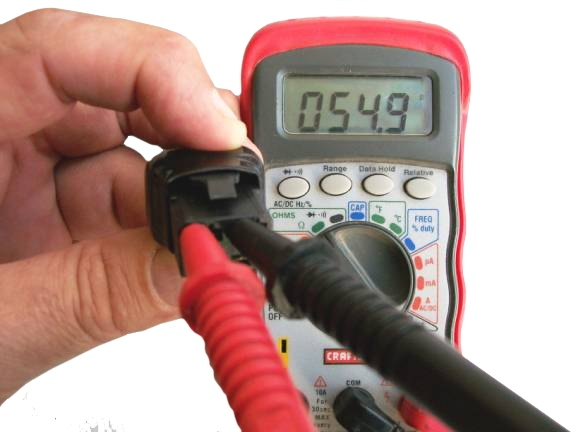The main functions we will need to be testing are Direct Current Voltage (measured in Volts) and resistance (measured in Ohms, the symbol is sometimes shown as an upside down horseshoe).
For most voltage readings we will be taking we can set the meter on the 50 volt DC scale or higher. Most power chairs and scooters on the market use two 12 volt batteries in series for a 24 volt system.
In DC voltage measurement there is a + and -
To measure resistance, set the meter to the “Ohms” function, at the lowest scale if you are testing a motor/brake assembly, or simply testing for continuity of a circuit.
First, check that the meter is functioning properly by touching the test probes together. The display should go from infinity to “0”, or near “0”.
Make sure there is no power in the circuit. Now, touch the probes to whatever you are measuring. The meter will display the resistance of the component.
DO NOT touch the test probes to a voltage source while the meter is in the “Ohms” position. The meter could be damaged.




